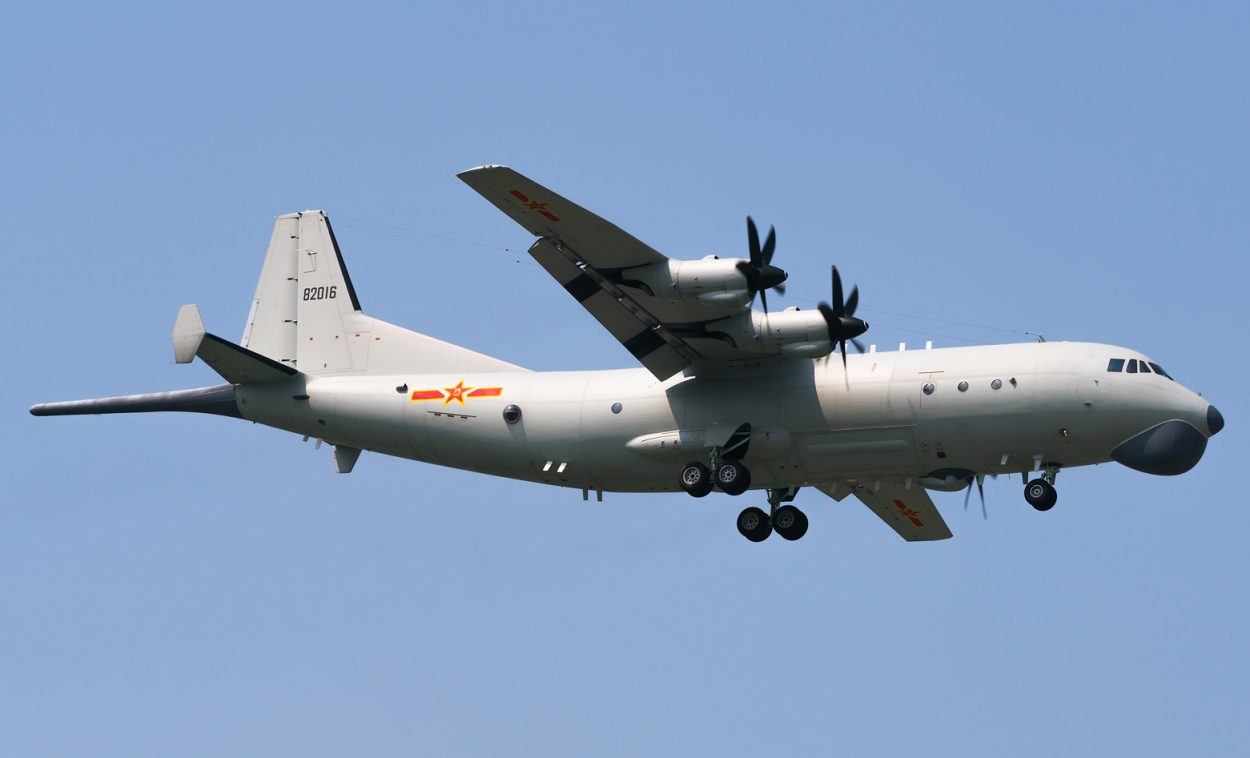People’s Liberation Army Navy (PLAN) has accelerated its military exercises in response to the US raising its pitch on Taiwan, the People’s Republic of China (PRC), signaling its red lines are being crossed by recognizing the island.
China ‘Hyper Accelerates’ Training Program For Its Fighter Pilots After Record Warplane Production
The Global Times tweeted pictures of fixed-wing PLAN Anti-Submarine Warfare (ASW) aircraft taking off for “night combat training of searching and attacking submarines.”
Washington, in 1979 agreed to the One China Policy and recognized the PRC as the sole legitimate Chinese government. However, US Speaker of the House Speaker Nancy Pelosi has announced a visit to Taiwan – which Beijing sees as recognizing the island as an independent state and in violation of the One China Policy – sparking objections and warnings that imply a military recourse to take the island.
China has often said it prefers “peaceful reunification” but has not ruled out military intervention if any other country recognizes Taiwan or the island itself declares independence.
The latest photos, however, of ASW aircraft in night-time practice can be seen in this context where China is signaling its military readiness to deter Taiwanese separatists and US military intervention.

The latest picture shows two Y-8Q ASW aircraft taking off into the sunset. EurAsian Times had previously written about the Y-8Q being China’s indigenously constructed ASW aircraft and featuring the world’s most advanced magnetic anomaly detectors, which can detect demagnetized submarines underwater.
The Y-8Q (also called the KQ-200) has a surface search radar in the nose, an electro-optic payload under the fuselage, and a magnetic anomaly detector (MAD) at the tail.
It has four sonobuoy deployment openings (AVIC’s SQ-4 and SQ-5), as well as a cargo bay that can carry anti-submarine grenades and torpedoes. It is built on the Y-8 Category III Platform and is fitted with six-bladed WJ-6C turboprops.
The Shaanxi Aircraft Corporation (SAC) manufactured the Y-8, a medium transport aircraft based on the Soviet An-12. The aircraft has a range of approximately 5,000 km and a patrol endurance of about 10 hours.
Target Is US Submarines Entering Taiwan Waters
Being held by the Southern Theatre Command means China’s interest remains in the South China Sea (SCS) – particularly the northern part of the SCS – since the command concerned with a Taiwan contingency is the Eastern Theatre Command (ETC).
Therefore, it is safe to assume that the PLAN’s target is US Navy nuclear-powered submarines (SSNs and SSBNs) which would have to enter the upward slope of the SCS using the Basi Channel and the Luzon Strait.
These have shallower waters and a few natural hideouts, according to Olli Pekka Soursa, assistant professor at the Rabdan Academy in the United Arab Emirates (UAE).
The Y-8Q are also effective maritime patrol aircraft, Soursa adds. Thus, when considering how they often lead larger formations, including the H-6K bombers – which have a credible anti-shipping capability – when flying into Taiwan’s southwestern Air Defence Identification Zone (ADIZ), means they might also be meant to collect targeting information.
An aviation regiment with the navy under the #PLA Southern Theater Command organized several fixed-wing anti-submarine patrol aircraft to set off for night combat training of searching and attacking submarines. Check out pictures of the aircraft taking off in the sunset. pic.twitter.com/JAU97fpSyt
— Global Times (@globaltimesnews) July 25, 2022
Nuclear Submarines & Anti-Submarine Warfare
Heavier nuclear-powered submarines are unsuitable for operations in the shallower, littoral waters of the SCS, with a section of US maritime strategists and naval planners long calling for the re-introduction of conventionally powered diesel-electric submarines (SSKs), which are also relatively quitter and easier to maintain.
Nuclear submarines also have a lot of fluid and steam running through its pipes, called “broadband noise”/“narrow band noise”/”discreet noise”, which makes detecting them through sonar relatively easier.
Advances in Air Independent Propulsion (AIP) technology have also increased their diving depth, speed, and submerged endurance, allowing them to stay underwater for at least a week, if not days.
Nevertheless, US SSNs would certainly be pressed into service in a Taiwan contingency and therefore, the Y-8Q and the region it practices in would remain of great interest to China.
Commodore G. Prakash, a retired naval aviator and an Anti-Submarine Warfare (ASW) specialist, explains the fundamentals of ASW, pointing out that nights are preferred over daytime for ASW exercises.
“Sea waters get cooler at night and allow SONAR detection at longer ranges than during the day. That is the best time of the day to train ASW crews anywhere in the world. One important tactical utility of night ASW is that it is at night that conventional submarines are likely to come up to snorting depths to run their diesel generators and charge their batteries,” Prakash adds. But the US does not have any SSKs, while Taiwan’s own indigenous diesel-electric submarine is at least three years away from entering service.
An avid follower of China issues, Prakash believes that publicizing otherwise routine night-time ASW exercises has more propaganda value, possibly meant to deter Taiwan and the US from acting against China.
- The author can be reached at satamp@gmail.com
- Follow EurAsian Times on Google News